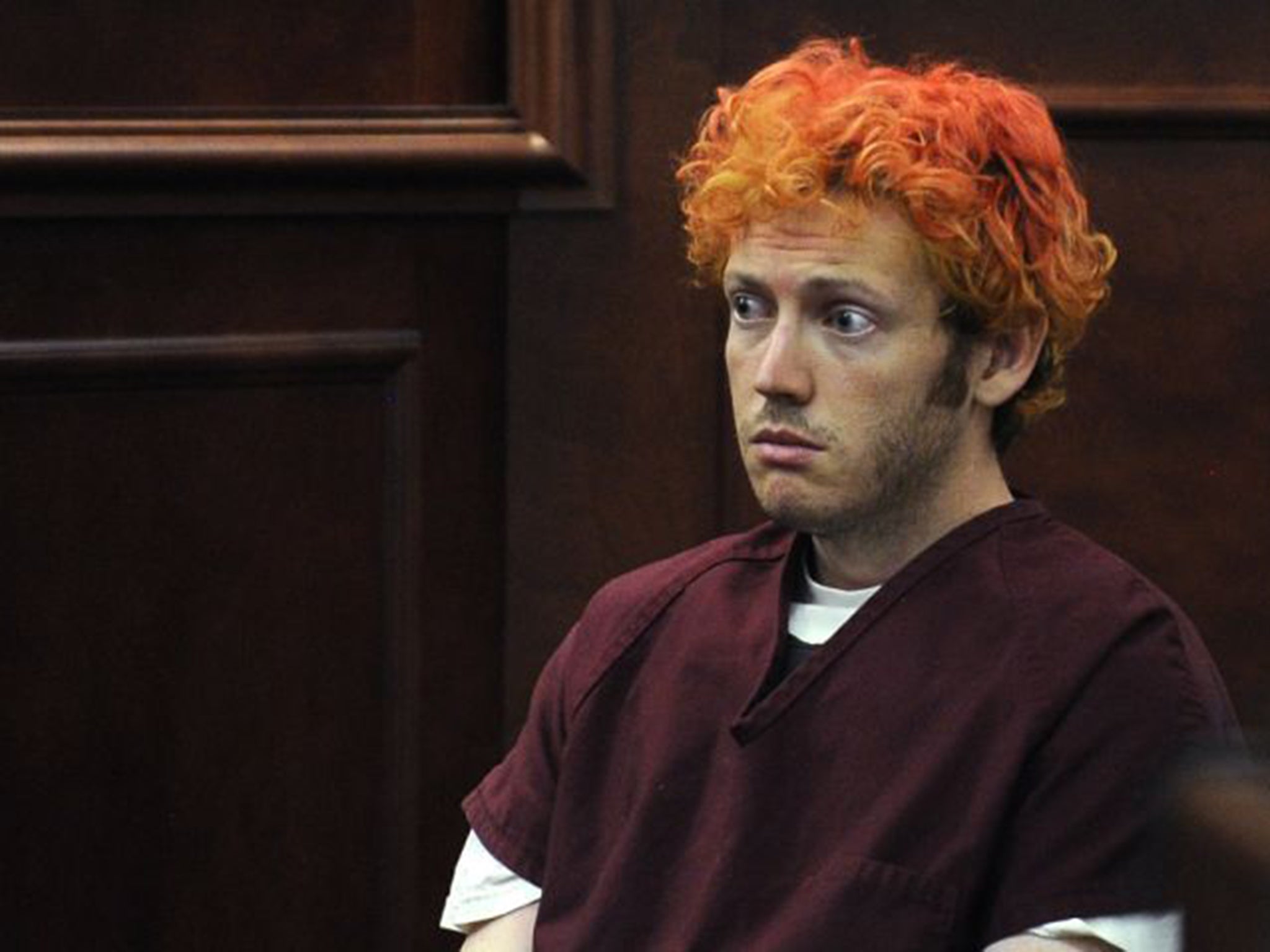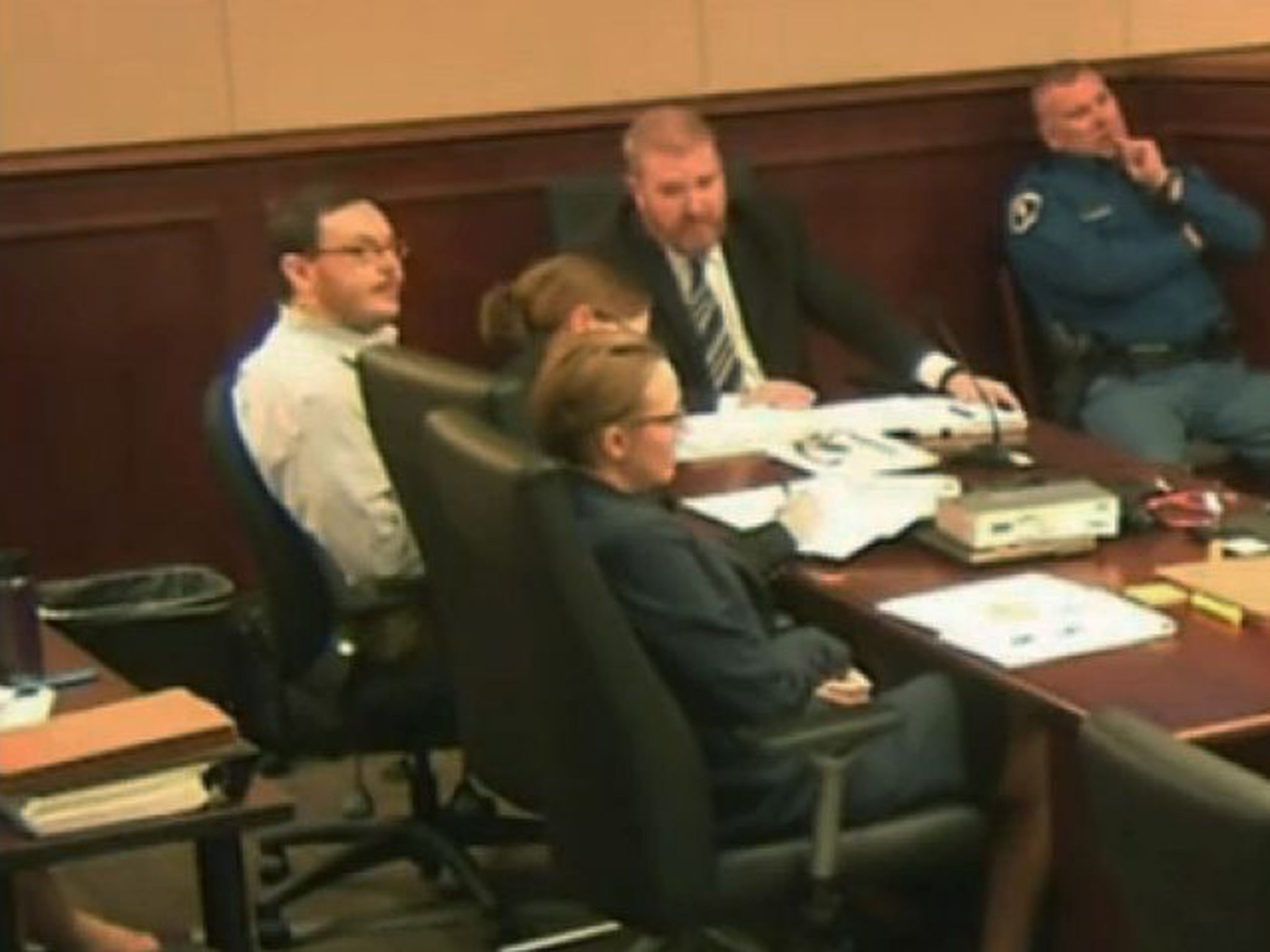2012 Aurora cinema shooting: Jury in 'Batman killer' case taken through shooter's 'door of horror'

Your support helps us to tell the story
From reproductive rights to climate change to Big Tech, The Independent is on the ground when the story is developing. Whether it's investigating the financials of Elon Musk's pro-Trump PAC or producing our latest documentary, 'The A Word', which shines a light on the American women fighting for reproductive rights, we know how important it is to parse out the facts from the messaging.
At such a critical moment in US history, we need reporters on the ground. Your donation allows us to keep sending journalists to speak to both sides of the story.
The Independent is trusted by Americans across the entire political spectrum. And unlike many other quality news outlets, we choose not to lock Americans out of our reporting and analysis with paywalls. We believe quality journalism should be available to everyone, paid for by those who can afford it.
Your support makes all the difference.Almost three years after he shot dead 12 people and injured 70 others at a cinema screening in Aurora, Colorado, the trial of 27-year-old James Holmes finally began in earnest.
Jurors heard opening statements at Arapahoe County District Court, at the start of what is expected to be a lengthy, painful examination of one of America’s most notorious mass shootings.
Holmes’ lawyers do not dispute that he was the gunman who opened fire on the audience during a midnight screening of The Dark Knight Rises, at Aurora’s Century 16 cinema, on 20 July 2012. Police said he had also booby-trapped his apartment with home-made explosives.
The killer appeared calm in court, wearing glasses and a dress shirt that concealed a harness tethering him to the floor. He is charged with 12 counts of first-degree murder and 12 of first-degree murder with extreme indifference, as well as 116 counts of attempted murder.
The prosecution is seeking the death penalty, but Holmes has pleaded not guilty by reason of insanity. Should jurors determine he was insane at the time of the shooting, and thus incapable of distinguishing right from wrong, the defendant will be indefinitely committed to a psychiatric hospital. If he is found guilty, the jury will then decide whether to impose the death penalty.

Some survivors and victims’ families were at the courthouse for the opening statements; others have said they will stay away from the trial. The proceedings are expected to last several months and, if Holmes is sentenced to death, they will probably be forced to endure many further years of appeals. Colorado has executed just one person since the reintroducing the death penalty in 1977.
District Attorney George Brauchler opened the prosecution’s case with a photograph of the emergency exit door the gunman used to gain access to the cinema before the shooting. “Through this door is horror,” he said. “Through this door is bullets, blood, brains and bodies.”
The prosecutor then outlined the copious preparations the defendant had made before carrying out his attack, telling jurors that two independent psychiatrists had evaluated Holmes since July 2012. “Both of them said the same thing,” Mr Brauchler said. “That guy was sane.”
The killer’s parents were also in court on Monday. Victims’ families reacted angrily last month when his mother, Arlene Holmes, published a book in which she wrote that her son “has a disease that changed his brain.” Holmes’ lawyers insist he acted “in the throes of a psychotic episode.”
Yet survivor Marcus Weaver, 44, is unmoved by the insanity defence. “I just don’t buy it,” said Mr Weaver, whose friend, 32-year-old Rebecca Wingo, was killed in the seat next to him. “This is a person who took pictures of the theatre beforehand, who booby-trapped his apartment. He bought tons of weapons and bomb-making materials. He was deliberate about the process over a couple of months. Is that the work of someone sane or insane?”
Some have suggested that the case will provide a rare look at the mind and motivations of a mass killer. But Vanderbilt University professor Jonathan Metzl, co-author of the study Mental Illness, Mass Shootings and the Politics of American Firearms, said the high-profile trial could make misleading connections between mental illness and gun crime.
“Justice needs to be served, but if mental illness itself is being put on trial, there’s a possibility of stigmatising persons with mental illness as being violent or hostile,” Dr Metzl said. “The prospects of it just becoming a show trial seem inordinately high.”
Join our commenting forum
Join thought-provoking conversations, follow other Independent readers and see their replies
Comments